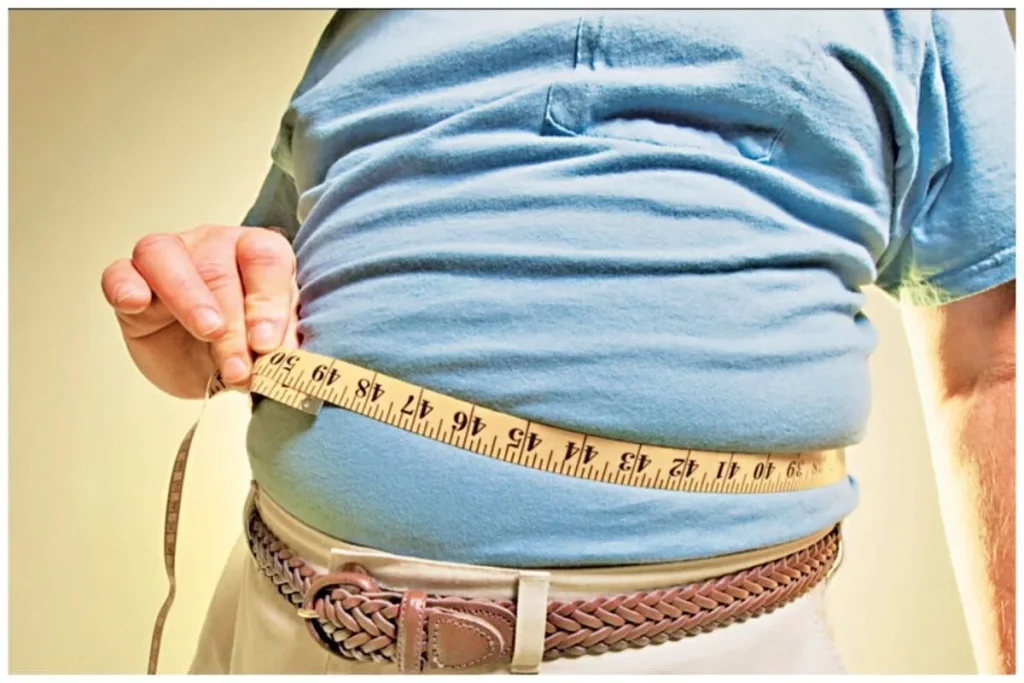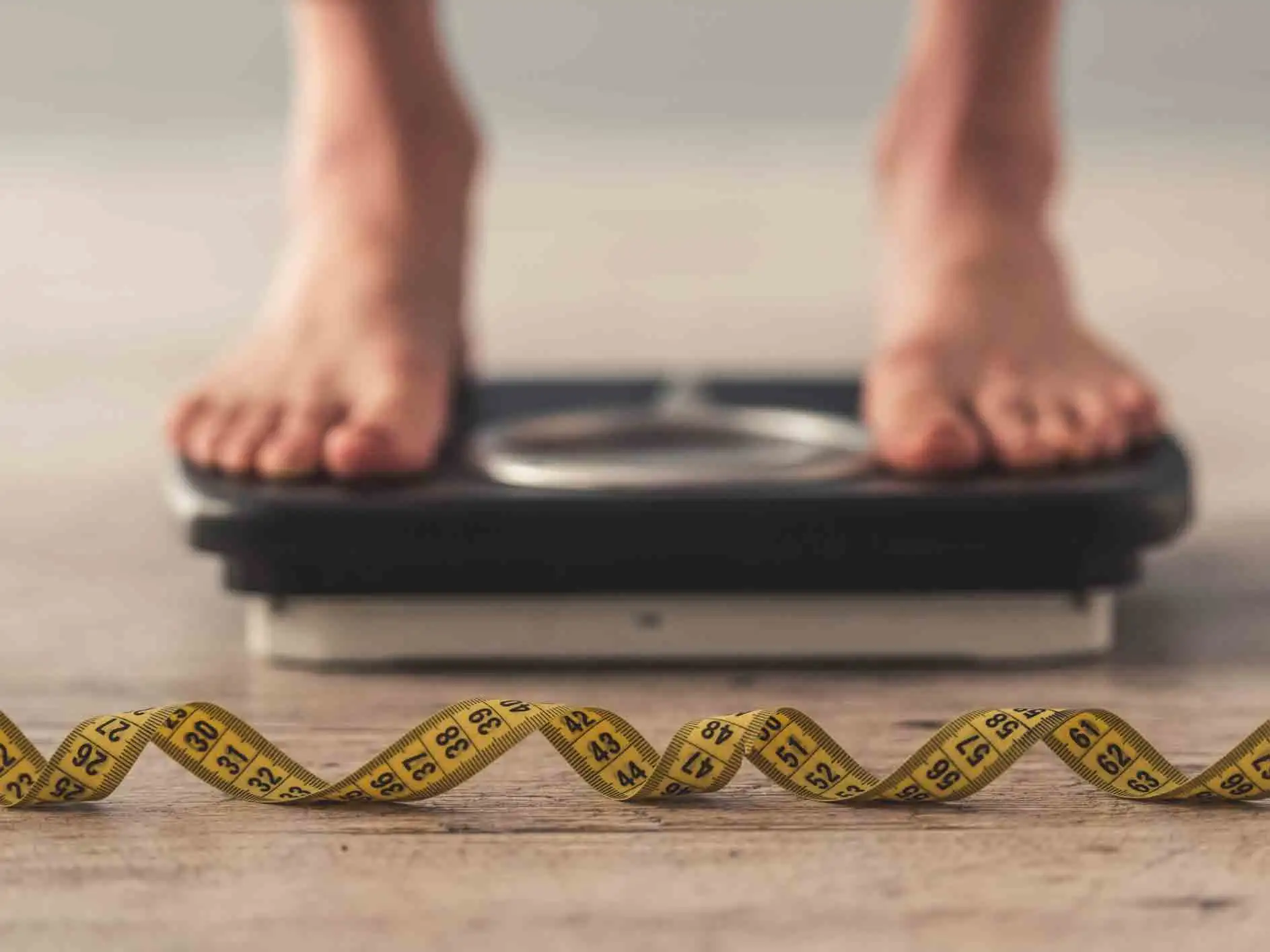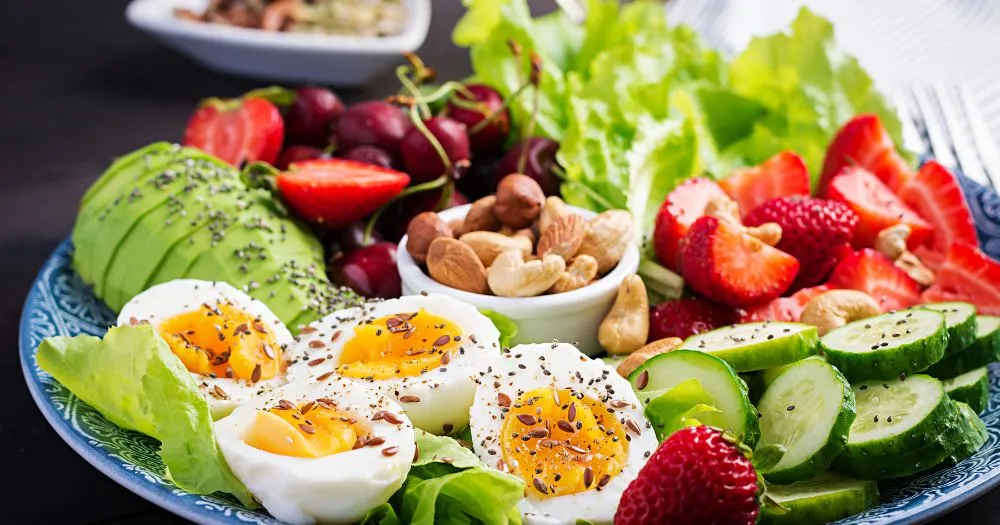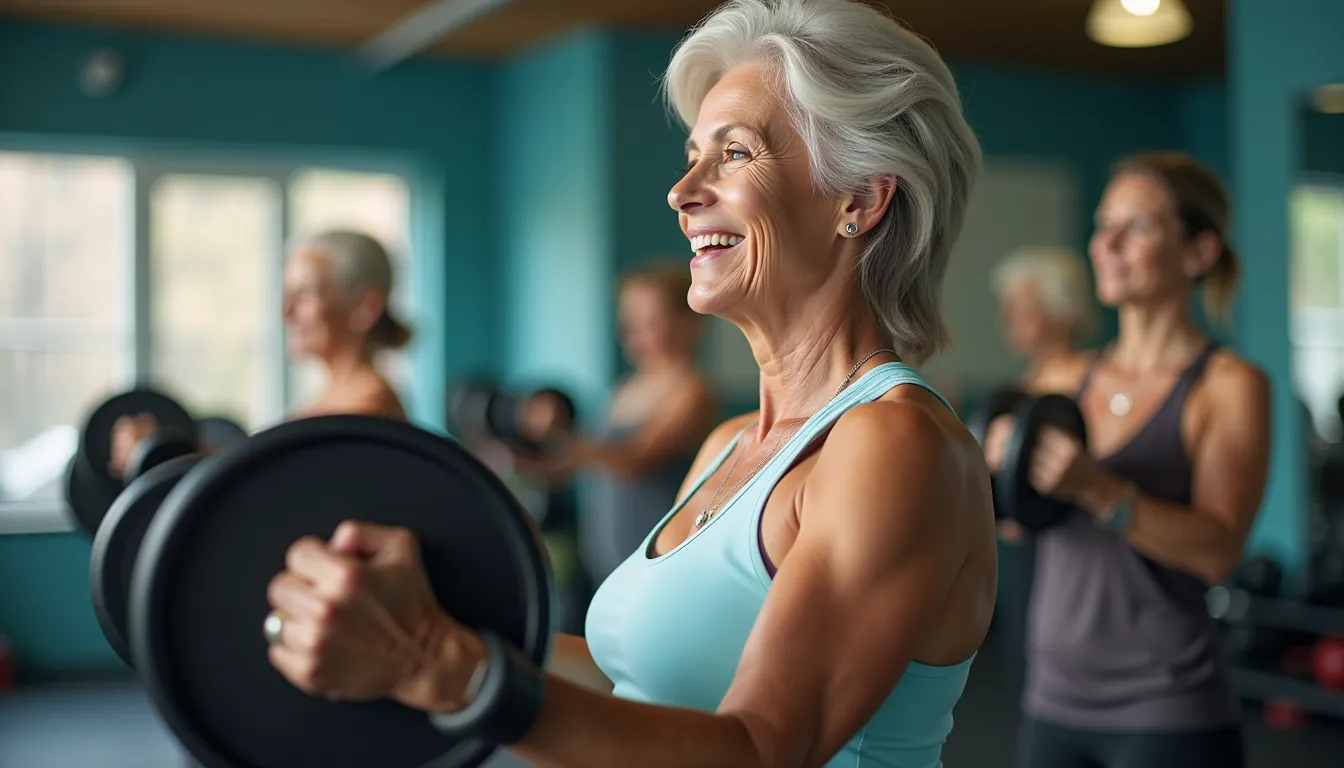
Losing Weight After 50: Best Exercises + Low-Calorie Foods
As people age, their bodies’ ability to burn calories decreases. This is due to prolonged periods of sitting, which leads to a reduction in muscle mass and an increase in fat. Therefore, various diets are considered, but along with a diet, you must learn to make your lifestyle healthy in every way. One of the most important factors of a healthy lifestyle is exercise. For this reason, in this section of the humanhealthmag, we will discuss beneficial exercises, low-calorie foods and method for losing weight after 50.
Best Ways to Lose Weight After 50
Here are some methods for losing and maintaining weight after 50:
- Increase Your Activities: Burning calories is a fundamental principle for weight loss. A sedentary lifestyle and reduced activity increase the risk of cardiovascular diseases and obesity. It’s recommended to increase your daily activities and be more active.
- Pay Attention to Your Diet: Planning foods for weight gain in elderly requires precision and attention to the special needs of this age group. If you can’t change your diet, include healthy foods to lose weight after 50. Avoid sugar, sugary products, fried foods, and acidic drinks. Consider eating several small meals instead of three main meals, as digestion becomes more challenging with age. Eating small meals throughout the day balances blood sugar levels and prevents excessive hunger.
- Eat More Fruits and Vegetables: Increase your fruit and vegetable intake to lose weight after 50. Fruits and vegetables are low in calories and rich in vitamins, minerals, fiber, etc., which increase satiety.
- Eat More Protein: Eating protein-rich foods helps people over 50 lose weight and has many benefits.
- Eat Meals on Time: Irregular meal times can lead to weight gain in middle age. Skipping breakfast and other meals can contribute to obesity.

- Exercise: Daily exercise and physical activity are effective ways for people over 50 to lose weight. A varied exercise program counteracts hormonal changes and prevents excessive weight gain. Exercise programs for people over 50 include strength, aerobic, and flexibility training, which we will briefly explain below.
- Get Regular Sleep: Lack of sleep or poor sleep quality can contribute to obesity. Getting enough sleep prevents obesity in middle age.
- Manage Stress: High stress increases appetite and cortisol levels, which can lead to weight gain, especially in the abdomen and face. People with high stress levels may consume more food. Managing stress can help losing weight after 50.
- Seek Medical Help: If you don’t see changes in your weight after following these tips, consult a doctor. They may order tests like thyroid, polycystic ovary syndrome, etc., to find and treat the underlying cause of obesity.
29 Low-Calorie Foods for Elderly Weight Loss
If seniors want to lose weight, they need to reduce their total calorie intake. Eating more gluten free diet for seniors and low-calorie foods, such as certain fruits and vegetables, is an easy way to achieve this goal.
Foods with Nearly Zero Calories for Losing Weight After 50
Apples
A highly nutritious fruit and one of the most popular fruits in European countries. Since the elderly body has to burn energy to digest apples, the net amount of calories provided by this fruit is less than what is reported.
Asparagus
A flowering plant that comes in green, white, and purple varieties. All types of asparagus are healthy, but purple asparagus contains compounds called anthocyanins that can help prevent heart disease. One cup of asparagus has only 27 calories and is rich in vitamin K and folate, providing 70% and 17% of the recommended daily intake, respectively.
Beets
Root vegetables that are usually dark red or purple. One of the researched benefits of beets is their potential to lower blood pressure. Beets contain only 59 calories per cup and 13% potassium.
Broccoli
One of the most nutritious vegetables on the planet. Broccoli is a member of the cruciferous vegetable family and may help fight cancer. One cup of broccoli has only 31 calories and contains more than 100% of the recommended daily amount of vitamin C for most people.
Broth
There are various types of broth, including chicken broth, beef broth, and vegetable broth. It can be eaten alone or used as a base for soups and stews. Depending on the type of broth, one cup, or about 240 ml, usually contains 7 to 12 calories.
Brussels Sprouts
Highly nutritious vegetables that look like small cabbages and can be eaten raw or cooked. Consuming Brussels sprouts may prevent DNA damage due to their high vitamin C content. This nutritional powerhouse contains only 38 calories per cup.
Cabbage
A vegetable with green or purple leaves. It is a common ingredient in coleslaw and other salads. Fermented cabbage is known as sauerkraut. Cabbage is very low in calories, with only 22 calories per cup.
Carrots
Very popular vegetables, usually slender and orange, but they can also be red, yellow, purple, or white. Most people eat carrots for good eyesight because they are rich in beta-carotene, which can be converted to vitamin A. Getting enough vitamin A is essential for proper vision. One cup of carrots has only 53 calories and provides more than 400% of the recommended vitamin A.
Cauliflower
Typically seen as a white head inside green leaves. Less common varieties have purple, orange, and yellow heads. In recent years, cauliflower has become very popular as a substitute for high-carbohydrate vegetables or legumes. One cup of cauliflower has 25 calories and only 5 grams of carbohydrates.

Celery
A well-known low-calorie food with long, green stalks containing insoluble fiber that may pass through your body undigested, so it has no calories. Celery has an high water content and is low in calories. On average, one cup of chopped celery has 18 kilocalories.
Fennel
A bulbous vegetable with a faint licorice flavor. Dried fennel seeds are used to add flavor to dishes. Fennel can be eaten raw, roasted, or cooked. There are 27 calories in one cup of raw fennel.
Garlic
Has a strong odor and flavor and is widely used in cooking to add flavor to foods. It has many therapeutic properties and can lower blood pressure and fight infection and even cancer. One clove of garlic has only 5 calories.
Grapefruit
One of the most delicious and nutritious citrus fruits. Seniors can eat grapefruit alone or with yogurt, salads, or even fish. Certain compounds in grapefruit may lower cholesterol levels and boost metabolism. Half a grapefruit contains 52 grams of calories.
Lettuce
One of the most watery vegetables, usually used in salads and on hamburgers or sandwiches. Some people think lettuce is not as nutritious as other foods, but lettuce is rich in vitamin K, vitamin A, and folate. One cup of lettuce has only 10 calories.
Lemons and Limes
The juice and zest of lemons and limes are widely used to flavor water, salad dressings, marinades, etc. Using citrus fruits is more than just adding flavor. Lemon juice also has compounds that can act as antioxidants to fight and prevent diseases in your body. One fluid ounce of lemon or lime juice has only 8 calories.
Mushrooms
Have a sponge-like texture and are a meat substitute for vegetarians and vegans. Mushrooms contain several important nutrients. One cup of mushrooms contains 15 calories.
Onions
A very popular vegetable, including red, white, and yellow onions, as well as spring onions or leeks. Although their taste varies depending on the type, all onions are low in calories. One medium onion has about 44 calories.
Peppers
Come in many colors, shapes, and sizes. Popular varieties include bell peppers and very spicy green peppers. Bell peppers are high in antioxidants and can protect the body from the harmful effects of oxidation. One cup of chopped red bell pepper has only 46 calories.
Radishes
Crisp root vegetables with a somewhat pungent taste. Radishes have several beneficial nutrients and contain only 19 calories per cup.
Strawberries
A very popular fruit. Eating berries can help protect you from chronic diseases like cancer and heart disease. There are less than 50 calories in one cup of strawberries.
Spinach
Another leafy green vegetable that is very low in calories. It is high in vitamin K, vitamin A, and folate and has more protein than other leafy greens. One cup of spinach has only 7 calories.
Snap Peas
A delicious type of pea with edible pods and a sweet flavor. They can be added to vegetable side dishes and salads. Snap peas are very nutritious, providing almost 100% of the recommended amount of vitamin C and only 41 calories per cup.
Tomatoes
One of the most popular vegetables in the world. They can be eaten raw, cooked, or pureed in tomato sauce. They are also very nutritious and contain a beneficial compound called lycopene. Lycopene may protect against cancer, inflammation, and heart disease. One cup of cherry tomatoes has 27 calories.
Turnips
White root vegetables with a slightly bitter flesh. Add them to soups or steam them. Turnips have several beneficial nutrients and contain only 37 calories per cup.
Watercress
A leafy green vegetable that grows in running water, usually used in salads and tea sandwiches. One cup of watercress contains 4 calories and provides 106% of the recommended amount of vitamin K, 24% of the recommended amount of vitamin C, and 22% of the recommended amount of vitamin A.
Watermelon
A very hydrating fruit, delicious on its own or with fresh mint and feta cheese. Watermelon contains almost all types of nutrients and a high amount of vitamin C. One cup of diced watermelon has 46 calories.
Zucchini
A green variety of summer squash with a delicate flavor that lends itself to a variety of recipes. Zucchini is low in calories, with only 18 calories per cup.
Beverages for Losing Weight After 50
Some beverages are low in calories, especially when you don’t add anything to them: plain water has no calories, most herbal teas and sparkling waters have zero to a few calories, and black coffee has only 2 calories per cup.
Low-Calorie Herbs and Spices for Losing Weight After 50
Herbs and spices are used to add flavor to foods and contain very few calories. Common herbs, fresh or dried, include parsley, basil, mint, oregano, and cilantro. Some well-known spices include cinnamon, paprika, cumin, and curry. Most herbs and spices have less than five calories per teaspoon.

Best Exercises Over 50 to Lose Weight
the impact of exercise on losing weight after 50. Some exercises are beneficial for seniors, and doing them in groups can prevent depression and isolation in addition to their beneficial effects on physical health. These exercises include swiss ball exercises for seniors and warming exercises, which are simple stretches that seniors should do before other exercises, but in a way that does not cause shortness of breath. Some beneficial exercises over 50 to lose weight:
Swimming
Swimming is one of the best exercises for seniors, as it improves cardiovascular health and strengthens muscles. It is also suitable for reducing stress and reducing pressure on bones and joints.
Yoga and Pilates
Yoga not only helps with muscle strength but also helps with fitness and guarantees weight loss along with a healthy and calm mind. Like yoga, Pilates is a light strength exercise that focuses on your body’s endurance, which is very important in old age. Doing yoga, Pilates, Tai Chi, etc., can be suitable for people who are overweight but cannot do heavy exercises. Doing yoga also reduces stress and helps losing weight after 50..
Working with Resistance Bands
There are undoubtedly exercises in your gym that work with resistance bands. These exercises are usually not expensive. Use them to increase your muscle strength. It is better to learn how to work with resistance bands and do it at home without any special equipment.
Cycling
Another effective exercise for weight loss in old age is cycling, which increases muscle strength, especially in the legs, and helps with heart health, improved metabolism, and mental health in people over 70.
Aerobics Classes
Aerobics classes are not only effective in increasing your physical strength but also have a special effect on your mood. So, it is better to try these group exercises in the long term.
Flexibility Exercises
Stretching exercises increase range of motion by increasing flexibility and help people perform daily activities more easily.
Walking
Walking is one of the most effective activities that help people over 50 lose weight. Walking burns extra calories and has positive effects on people’s mental health.
Strength Training
Strength exercises increase your body’s endurance and resistance and keep your muscles healthy.
Aerobic Exercise
People over 50 can do aerobic exercises to reduce body metabolism and improve their heart health.
Concluding Remarks
Many people gain weight as they age. Weight gain occurs more easily after 50, and weight loss becomes difficult in middle age. As people age, muscle gradually disappears and fat replaces muscle, resulting in many people becoming obese in middle age. Weight loss may be difficult for losing weight after 50. for several reasons, so these people need a weight loss diet.
As explained, losing weight after 50 may seem a little difficult. By following the tips mentioned and making changes to your lifestyle, you can treat your obesity and reach your desired weight. our feedback is the secret ingredient to improving our content! Comment below and let us know how this post resonated with you. We want to hear ALL your ideas!

Frequently Asked Questions
Why is Weight Loss Difficult After 50?
There are several reasons why weight loss becomes difficult for people over 50. The onset of certain chronic and acute diseases of old age, the use of certain medications, and a slower metabolism are among the important reasons why weight loss is difficult after 50.
What Types of Exercise Are Good for Weight Loss After Age 50?
Answer: There are many types of exercise that are good for weight loss after age 50. Aerobic exercise, such as walking, swimming, or cycling, can help burn calories and improve cardiovascular health. Strength training, such as weight lifting or resistance training, can help build muscle and increase metabolism. Flexibility training, such as yoga or Pilates, can help improve balance, coordination, and range of motion.
